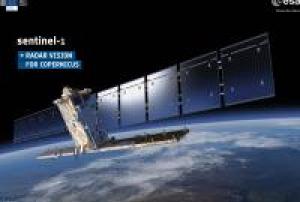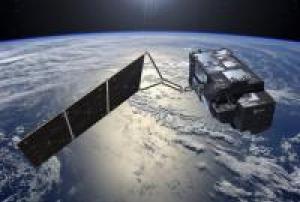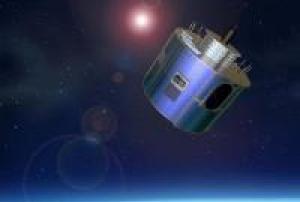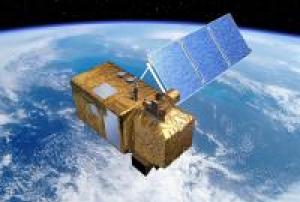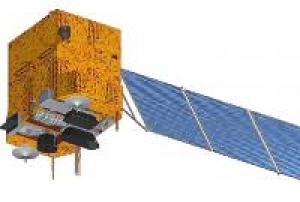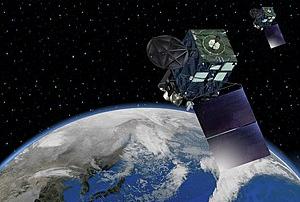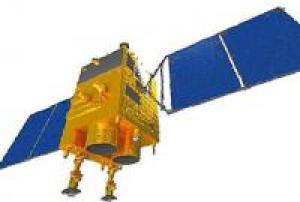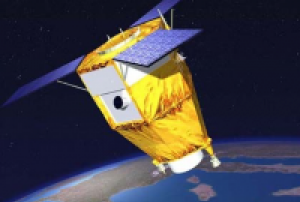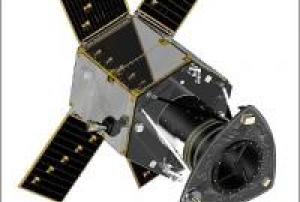Tsunami
Definition
Facts and figures
Further information
UN-SPIDER Regional Support Offices with hazard-specific expertise
Related content on the Knowledge Portal
- read more
Sentinel-1 is a two satellite constellation with the prime objectives of land and ocean monitoring. The goal of the mission is to provide C-Band Synthetic Aperture Radar (SAR) data continuity following the retirement of ERS-2 and the end of the Envisat mission.
To accomplish this the satellites carry a C-SAR sensor, which offers medium and high resolution imaging in all weather conditiions. The C-SAR is capable of obtaining night imagery and detecting small movement on the ground, which makes it useful for land and sea monitoring.
Sentinel-1 will work in a pre-programmed operation mode to avoid conflicts and to produce a consistent long-term data archive built for applications based on long time series.
The mission benefits numerous services. For example, services that relate to the monitoring of Arctic sea-ice extent, routine sea-ice mapping, surveillance of the marine environment, including oil-spill monitoring and ship detection for maritime security, monitoring…25/04/2016 Carrying a suite of cutting-edge instruments, Sentinel-3 will measure systematically Earth’s oceans, land, ice and atmosphere to monitor and understand large-scale global dynamics. It will provide essential information in near-real time for ocean and weather forecasting.
read more
The mission is based on two identical satellites orbiting in constellation for optimum global coverage and data delivery. For example, with a swath width of 1270 km, the ocean and land colour instrument will provide global coverage every two days. Sentinel-3A was launched on 16 February 2016.
With a focus towards our oceans, Sentinel-3 measures the temperature, colour and height of the sea surface as well as the thickness of sea ice. These measurements will be used, for example, to monitor changes in sea level, marine pollution and biological productivity.
Over land, this innovative mission will provide a bigger picture by monitoring wildfires, mapping the way land is used, provide indices of…16/02/2016Today, weather satellites scan the whole Earth, meaning not a single tropical storm or severe weather system goes undetected. The early detection and warnings they provide have saved thousands of lives.
Meteosat data is of unique value to nowcasting of high impact weather in support of safety of life and property.
It has been shown to improve weather forecasts and severe weather warnings which, in turn helps limit damage to property and benefits industry e.g. transport, agriculture and energy.
Meteosat-11 is the prime operational geostationary satellite, positioned at 0 degrees and providing full disc imagery every 15 minutes. It also provides Search and Rescue monitoring and Data Collection Platform relay service.Instruments:
read more
GERB (Geostationary Earth Radiation Budget)
MSG Comms (Communications Package for MSG)
SEVIRI (Spinning Enhanced Visible and Infra-Red Imager)
16/07/2015The Sentinels are a fleet of satellites designed specifically to deliver the wealth of data and imagery that are central to the European Commission’s Copernicus programme.
read more
Sentinel-2 carries an innovative wide swath high-resolution multispectral imager with 13 spectral bands for a new perspective of our land and vegetation. The combination of high resolution, novel spectral capabilities, a swath width of 290 km and frequent revisit times provides unprecedented views of Earth.
The mission is based on a constellation of two identical satellites in the same orbit, 180° apart for optimal coverage and data delivery. Together they cover all Earth’s land surfaces, large islands, inland and coastal waters every five days at the equator. Sentinel-2A was launched on 23 June 2015.
As well as monitoring plant growth, Sentinel-2 can be used to map changes in land cover and to monitor the world’s forests. It also provides information on pollution in lakes and coastal waters. Images of…23/06/2015KOMPSAT-3A is the world’s first civilian satellite that is equipped with a high-resolution, infrared(MWIR) sensor which enables nighttime observation. It also provides the optical images with high resolution of 50 cm or less for the second in the world following the US.
read more
The technology of improving the optical image quality by 30% or more without degradation using diagonal data to provide 38-cm-class images was developed for the second following the EU.
The high-resolution electro-optical spaceborne camera AEISS-A(Advanced Earth Imaging Sensor System-A) developed by KARI and accommodated on KOMPSAT-3A platform features 50cm class optical photography, which marks the highest resolution among cameras mounted on domestic satellites. The IR sensor, which is capable of detecting heat on the ground, is used to observe fire, volcanic activity and urban thermal islands during nighttime, even under any weather conditions.
KOMPSAT-3A operates in the sun’s…26/03/2015CBERS is a cooperative program between CAST (Chinese Academy of Space Technology) of the People's Republic of China, and INPE (Instituto de Pesquisas Espaciais) of Brazil (government agreement of both countries for the development and operation of two satellites). The program was signed in July 1988 to establish a complete remote sensing system (space and ground segment) to supply both countries with multispectral remotely sensed imagery.
In Nov. 2002, the governments of China and Brazil decided to expand the initial agreement by including another two satellites of the same kind, CBERS-3 and 4, as the second generation of the Sino-Brazilian cooperation effort. The planned cooperative CBERS-3&4 program of CAST and INPE employs enhanced versions of spacecraft and instruments. The specification of the project was agreed upon and closed in July 2004.Instruments:
read more
DCS (Data Collection System)
MUXCAM (Multispectral Camera)
PANMUX (…06/12/2014Himawari 8 is a Japanese weather satellite, the 8th of the Himawari geostationary weather satellites operated by the Japan Meteorological Agency. The spacecraft was constructed by Mitsubishi Electric with assistance from Boeing, and is the first of two similar satellites to be based on the DS-2000 satellite bus. Himawari 8 entered operational service on 7 July 2015 and is the successor to MTSAT-2 (Himawari 7) which was launched in 2006.
07/10/2014Gaofen-2 is a follow-on mission of the Gaofen-1technology demonstration mission, a series of high-resolution optical Earth observation satellites of CNSA (China National Space Administration), Beijing, China. GF-2 is part of the CHEOS (China High Resolution Earth Observation System) family.
The mission goal of GF-2 to implement sub-meter level, high geographical accuracy Earth surface imaging, promoting application of CHEOS satellites and its social and economic benefits, meanwhile to make breakthrough in key technologies like fast roll and high stable attitude control, long focal length large f-number, lightweight camera design and long life bus design, enhancing China's civilian imaging satellite abilities and reliability.Instrument: PMC-2 (PAN and Multispectral Camera Suite-2)
read more
- 2 barrel-mounted panchromatic cameras
- 2 MS (Multispectral) cameras
- swath width: 23km for each camera / combined swath width: 45.3km19/08/2014SPOT-7 is a high-resolution wide-swath imaging spacecraft built and operated by Airbus Defence and Space taking over the majority of Spot Image after the government support of the SPOT program was terminated. SPOT-6 – launched in 2012 – and SPOT-7 are identical spacecraft, based on the AstroSat-250 satellite bus and use the NAOMI (New AstroSat Optical Modular Instrument) payload to acquire optical imagery to ensure the continuity of SPOT data, building on experience gained through previous missions, particularly SPOT-5 that launched in 2002.
The SPOT-7 spacecraft is built for a ten-year mission featuring two NAOMI cameras to cover a 60-Kilometer ground swath, 120km using single-pass mosaic imaging. Overall, the satellite can achieve a resolution of two meters in panchromatic and eight meters in multispectral mode covering the visible and near-infrared spectral bands.Instrument: 2x…
read more30/06/2014Launched in June 2014 with an expected life-time of more than 7 years, Deimos-2 is an agile, high resolution satellite that became the only European fully-private satellite capable of providing sub-metric multispectral imagery. From a 620-km ascending sun-sync orbit, it has a 12/24-km swath (depending on the imaging mode), stereo-par capability and ±45º off-nadir tilting capacity. Its multispectral camera has a panchromatic and 4 spectral bands (R,G,B,NIR), at 10 bits. This allows Deimos-2 to provide 75-cm pan-sharpened imagery.
Deimos-2 was designed to provide a cost-effective and highly responsive service to cope with the increasing need of fast access to sub-metric imagery. As evidence of this, it provides near-real time image tasking, downloading, processing and delivery to the end user. It has a collection capacity of more than 150,000 km2/day with a two-day average revisit time worldwide. The whole Deimos-…
read more19/06/2014

